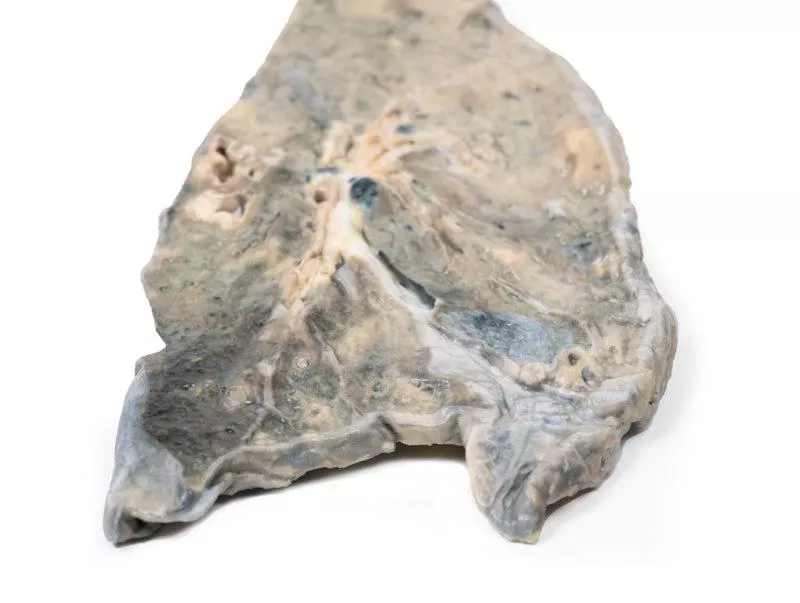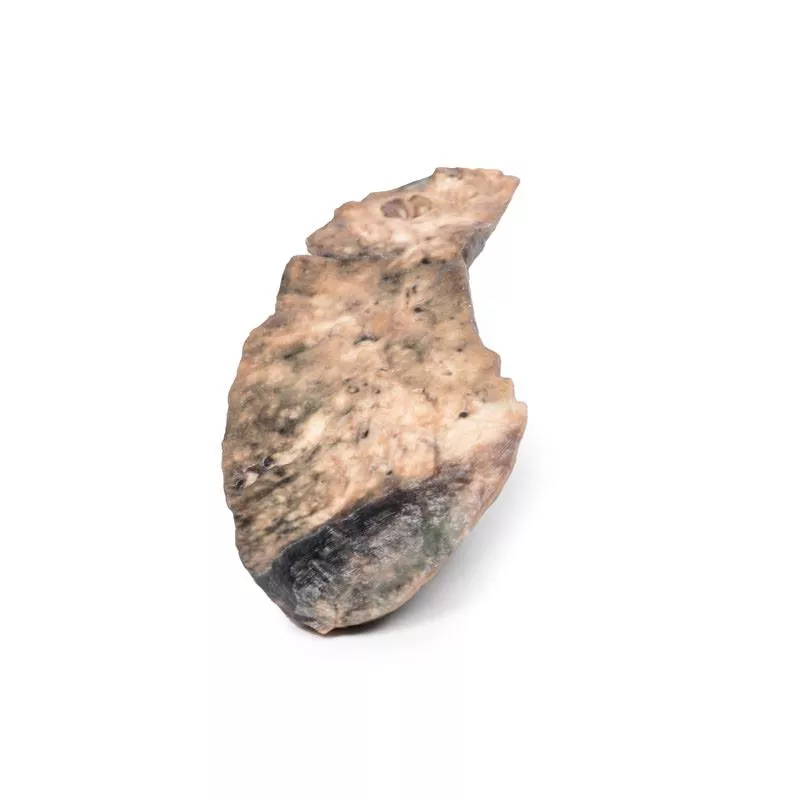Produktinformationen "Lung - Staphylococcus aureus Abscesses"
Klinische Vorgeschichte
Eine 55-jährige Frau stellte sich mit starker Atemnot, produktiver Husten und Mundsoor vor. Aufgrund einer Behandlung mit Steroiden und Cyclophosphamid bei rheumatoider Arthritis war sie immunsupprimiert. Der Auswurf ergab Staphylococcus aureus. Trotz Therapie verstarb sie kurz nach der Aufnahme.
Pathologie
Die rechte Lunge zeigt mehrere Abszesshöhlen, die größte (4 × 3 cm) im Unterlappen, eine weitere (3 × 2 cm) im Oberlappen, umgeben von Konsolidierung. Weitere kleine Abszesse und fleckige Verdichtungen im Mittellappen sind sichtbar. Zahlreiche Bronchien sind mit Eiter verstopft. Der Erreger war Staph. aureus.
Weitere Informationen
Staphylococcus aureus ist ein grampositives Bakterium, das oft auf Haut und Schleimhäuten vorkommt. Es kann jedoch opportunistische Infektionen verursachen – darunter Lungenentzündungen und Endokarditis. Es ist ein häufiger Erreger von nosokomialer Pneumonie nach Intubation sowie sekundärer bakterieller Pneumonie nach Virusinfekten.
MRSA-Infektionen nehmen in Kliniken zu. IV-Drogenkonsumenten sind besonders gefährdet für metastatische Infektionen. Staph-Pneumonie verläuft oft schwer mit Abszessbildung und Empyem.
Sie sollte bei Risikopatienten mit rascher Verschlechterung, Hämoptysen, multilobärer Beteiligung oder Koagulopathie in Betracht gezogen werden. Erstlinien-Therapie ist Flucloxacillin, bei Resistenzen (z.?B. MRSA) kommen Vancomycin oder Linezolid zum Einsatz.
Eine 55-jährige Frau stellte sich mit starker Atemnot, produktiver Husten und Mundsoor vor. Aufgrund einer Behandlung mit Steroiden und Cyclophosphamid bei rheumatoider Arthritis war sie immunsupprimiert. Der Auswurf ergab Staphylococcus aureus. Trotz Therapie verstarb sie kurz nach der Aufnahme.
Pathologie
Die rechte Lunge zeigt mehrere Abszesshöhlen, die größte (4 × 3 cm) im Unterlappen, eine weitere (3 × 2 cm) im Oberlappen, umgeben von Konsolidierung. Weitere kleine Abszesse und fleckige Verdichtungen im Mittellappen sind sichtbar. Zahlreiche Bronchien sind mit Eiter verstopft. Der Erreger war Staph. aureus.
Weitere Informationen
Staphylococcus aureus ist ein grampositives Bakterium, das oft auf Haut und Schleimhäuten vorkommt. Es kann jedoch opportunistische Infektionen verursachen – darunter Lungenentzündungen und Endokarditis. Es ist ein häufiger Erreger von nosokomialer Pneumonie nach Intubation sowie sekundärer bakterieller Pneumonie nach Virusinfekten.
MRSA-Infektionen nehmen in Kliniken zu. IV-Drogenkonsumenten sind besonders gefährdet für metastatische Infektionen. Staph-Pneumonie verläuft oft schwer mit Abszessbildung und Empyem.
Sie sollte bei Risikopatienten mit rascher Verschlechterung, Hämoptysen, multilobärer Beteiligung oder Koagulopathie in Betracht gezogen werden. Erstlinien-Therapie ist Flucloxacillin, bei Resistenzen (z.?B. MRSA) kommen Vancomycin oder Linezolid zum Einsatz.
Erler-Zimmer
Erler-Zimmer GmbH & Co.KG
Hauptstrasse 27
77886 Lauf
Germany
info@erler-zimmer.de
Achtung! Medizinisches Ausbildungsmaterial, kein Spielzeug. Nicht geeignet für Personen unter 14 Jahren.
Attention! Medical training material, not a toy. Not suitable for persons under 14 years of age.



































